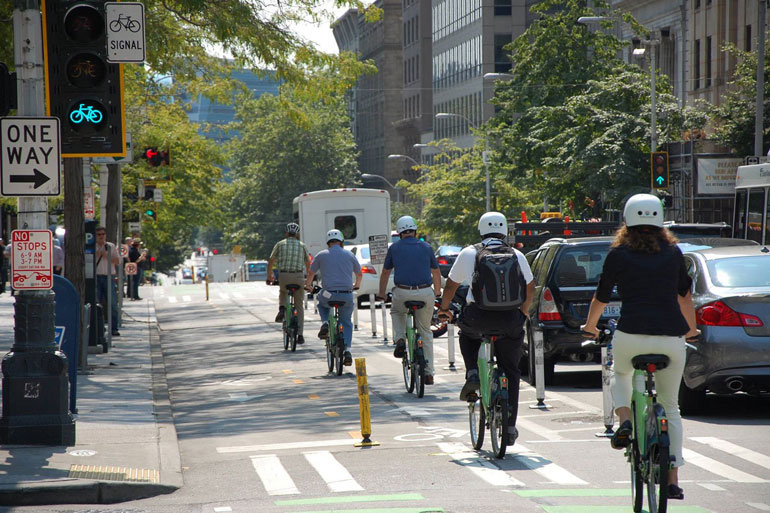Seattle’s struggle to attract riders reveals what makes a bike-share program thrive — or in the Emerald City’s case, barely survive.

Bike shares have thrived in cities across the country. But Seattle’s Pronto program hasn’t worked as hoped. Now the city has decided to take over the financially beleaguered bike share—the council voted this spring to buy it for $1.4 million—and Seattle is faced with some tough questions.
The biggest will be how to boost Pronto’s anemic ridership. Pronto predicted it could attract 4,000 paid members in its first year. It turns out that membership actually slipped to below 2,000. That means that Pronto’s 500 bikes, distributed among 54 stations, are not used much—just 0.78 times a day, on average. The usage rates for bike-share systems in Boston, Chicago, New York City and Washington, D.C., by comparison, are higher than three times a day. Denver, Minneapolis and San Francisco also have higher usage rates than Seattle.
There are many theories on why Seattle’s performance has been so lackluster. Certainly the city’s geography doesn’t make it easy. Pronto introduced special bikes, with extra gears, to help riders climb hills. That said, San Francisco, another hilly city, is going forward with a major expansion of its successful bike share. Seattle’s rainy climate might discourage riders, but Portland, Ore., has a wet climate, too, and it plans to start a bike-sharing service with twice as many bikes as Seattle’s this year. Another complicating factor for Seattle is a state law that requires riders to wear helmets, which many bicycle advocates see as a deterrent for would-be cyclists. But the same helmet law hasn’t discouraged Tacoma, Wash., from looking into launching its own bike-share system (although Tacoma hasn’t decided whether to go forward with it yet).
From our partners:
Perhaps the biggest issue, though, is how far apart Seattle’s bike stations are from each other. The National Association of City Transportation Officials found that station density is one of the biggest factors in the success of bike-sharing programs. The group has recommended that stations be no more than a five-minute walk apart. Seattle’s bike-share stations are located in two clusters: 42 stations downtown and eight in the University District roughly three miles away.
Seattle Mayor Ed Murray proposed a city takeover and expansion of Pronto last year, but the council wanted to wait until it could figure out how to make the system financially viable. Some wanted to turn the system over completely to a private company, as in New York City. Ultimately the council opted for a takeover instead. The move prevented Pronto from shutting down at the end of March and stopped the city from losing the $1 million it received from the federal government to launch the service.
Mike O’Brien, the chair of the city council’s transportation committee, told constituents he anticipates that Seattle will expand Pronto now that it has taken over. “You can expect to see more stations and more bikes, which means both better access in the areas currently served by Pronto and a reach into new neighborhoods,” he said.
“A bigger network will mean many new opportunities for people to use the system.”
This feature originally appeared in Governing.















